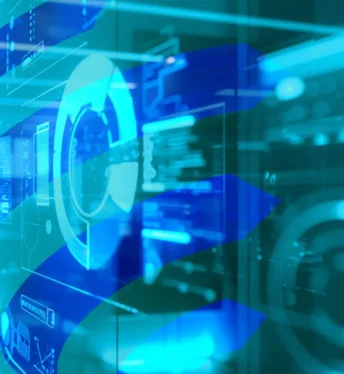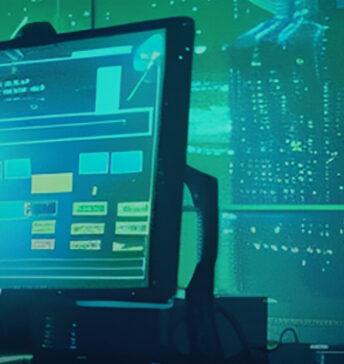Legacy systems, once the backbone of many organizations, are now often a hindrance to digital transformation and business growth. These outdated systems are plagued by a host of issues, including outdated technology, high maintenance costs, and limited integration capabilities. As a result, they can stifle innovation, impede business processes, and pose significant security risks. To thrive in the modern world, businesses must modernize their legacy applications, transforming these systems into agile, scalable, and secure solutions that align with modern business needs.
By taking a strategic approach to modernization, organizations can improve performance, enhance customer experiences, and unlock new opportunities for growth. In this step-by-step guide, learn how to modernize legacy applications to eliminate technical debt and future-proof your business.
Step 1: Assessment and Planning
The first step in modernizing legacy applications is a thorough assessment of the application environment. A well-structured assessment provides a solid foundation, allowing business leaders to make informed decisions when developing their modernization roadmap. To achieve their desired outcomes, organizations will need to begin by evaluating their systems, defining their goals, and weighing the costs and risks involved with modernizing legacy apps.
Evaluate Current Systems
Application modernization projects must begin with a comprehensive evaluation of the legacy environment. This involves a deep dive into the application architecture, functionality, performance, and security. By understanding the current state, you can identify areas of weakness, technical debt, and opportunities for improvement. Consider factors such as application complexity, dependencies, data volume, and integration points.
Define Business Goals
Aligning modernization efforts with broader business objectives is essential to achieving long-term success. Start by clearly defining the desired outcomes of your project, such as enhancing user experience, reducing costs, improving scalability, and enabling new business capabilities. By understanding these goals ahead of time, you can better prioritize modernization initiatives and measure their impact moving forward.
Risk Analysis and Mitigation
Modernization projects inherently involve risks, including technical challenges, data loss, and business disruptions. To prepare for these challenges, conduct a thorough risk assessment to identify the potential obstacles that could arise and develop proactive strategies to mitigate them. Factors to consider include the complexity of the legacy system, the chosen modernization approach, and the impact of potential downtime. Developing a robust contingency plan is crucial to minimize the impact of unexpected challenges.
Step 2: Choosing a Modernization Approach
Once the foundation for the project has been laid, it’s time to choose a modernization approach. Selecting the right approach will be crucial for achieving the desired outcomes, but it’s important to understand that each of these strategies come with their own benefits and challenges.
When it comes to modernizing legacy systems, business leaders should consider the following approaches:
- Rehosting (Lift and Shift): This approach involves moving applications to a new environment, typically the cloud or hybrid cloud, with minimal changes to the application code. It’s a quick way to reduce infrastructure costs and take advantage of cloud benefits. However, it doesn’t address underlying technical debt or optimize for cloud-native capabilities.
- Replatforming: This approach involves making minor changes to the application to optimize it for a new platform while preserving its core functionality. Replatforming offers a balance between speed and optimization, allowing organizations to leverage new platform features without extensive code modifications.
- Refactoring and Re-architecting: These approaches involve deep modifications to the application codebase to improve performance, scalability, or maintainability. Refactoring focuses on code structure and design, while re-architecting involves redesigning the application architecture. These options are more complex but offer long-term benefits.
- Rebuilding or Rewriting: This involves creating a new application from scratch using modern technologies and architectures. While it’s the most time-consuming and costly option, it provides the opportunity to build a solution tailored to current and future business needs.
- Replacement: In some cases, replacing a legacy system with a commercial off-the-shelf (COTS) package or a custom-built application might be more efficient and cost-effective.
To choose the right approach for your project, you will need to consider multiple factors, including the application’s age and complexity as well as the business goals and available resources. By carefully evaluating the pros and cons that come with each option, organizations can select the modernization strategy that best aligns with their objectives and desired outcomes.
Step 3: Implementation
Once a plan is in place, the implementation phase can begin. This will involve a series of steps to migrate and integrate applications while ensuring quality and performance.
- Data Migration: Successfully migrating data from legacy systems to the new environment is critical. This process requires careful planning and execution to preserve data integrity and security. Data cleansing, transformation, and validation are all essential steps. Consider using specialized data migration tools and techniques to streamline the process.
- Integration with Modern Systems: Integrating the modernized application with existing systems and services is crucial for seamless operations. This involves developing interfaces and APIs to enable data exchange and communication. Careful planning is required to ensure compatibility between the existing code and new systems.
- Testing and Quality Assurance: Rigorous testing is essential to validate the functionality, performance, and security of the modernized application. This includes functional testing to verify that the application meets its intended requirements, performance testing to assess response times and scalability, and security testing to identify vulnerabilities.
- Deployment and Monitoring: Deploying the modernized application requires careful planning and execution. Consider a phased rollout approach to minimize disruptions and allow for gradual testing in a production environment. Continuous monitoring will allow you to identify and address issues promptly.
By following these steps, organizations can successfully implement their modernization initiatives and start reaping the rewards of their upgraded systems.
Step 4: Change Management
Successful application modernization extends beyond technical implementation; it requires effective change management. This involves addressing both customer and employee needs to ensure a smooth transition.
Comprehensive training programs are essential to equip employees with the skills and knowledge to utilize the new systems effectively. This includes training on new functionalities, processes, and tools. Collaboration between development and operations teams is vital to ensure that training aligns with the new system’s capabilities.
Managing cultural change is equally important. Modernization often necessitates shifts in how work is done, requiring employees to adapt to new roles and responsibilities. Effective communication, open dialogue, and employee involvement are all important for fostering a positive attitude towards change in your organization.
Addressing resistance to change is another critical aspect. By understanding the root causes of resistance, you can implement strategies to overcome these challenges. Active listening, providing clear communication, and offering support can help alleviate employee concerns. Overall, a well-executed change management strategy is essential for maximizing the benefits of application modernization and ensuring a seamless transition.
Step 5: Post-Modernization Maintenance
Application modernization is an ongoing process that goes beyond planning and implementation. Effective post-modernization maintenance is key for ensuring the continued success and value of modernized applications.
Ongoing monitoring and optimization are essential for identifying and addressing performance issues, bottlenecks, and security vulnerabilities. By closely tracking application performance metrics, organizations can fine-tune configurations, allocate resources, and make strategic improvements to the user experience.
Regular updates and upgrades are also important, keeping modernized applications aligned with the latest technologies and security standards. By staying up-to-date, organizations can better protect against emerging threats while also enhancing functionality and improving the overall value of their applications.
To keep up with post-modernization maintenance, organizations will need to assemble a dedicated team responsible for monitoring, troubleshooting, and optimizing the application environment. By investing in ongoing maintenance and support, you can maximize the return on your modernization investment and ensure long-term success for your business.
Conclusion
Modernizing legacy applications is no longer an option but a necessity for businesses looking to remain agile and competitive. By following a structured approach that includes assessment, planning, implementation, and ongoing maintenance, organizations can successfully transform their outdated systems into modern, efficient, and scalable applications.
Successful legacy application modernization projects deliver significant benefits, including improved performance, enhanced security, increased agility, and reduced costs. By investing in this transformative journey, organizations can unlock new opportunities, improve customer experiences, and position themselves for long-term growth.
Ready to get started with your application modernization efforts? Dive deeper into the topic with our comprehensive guide to application modernization or fill out a form to receive a custom roadmap for your modernization project.



















